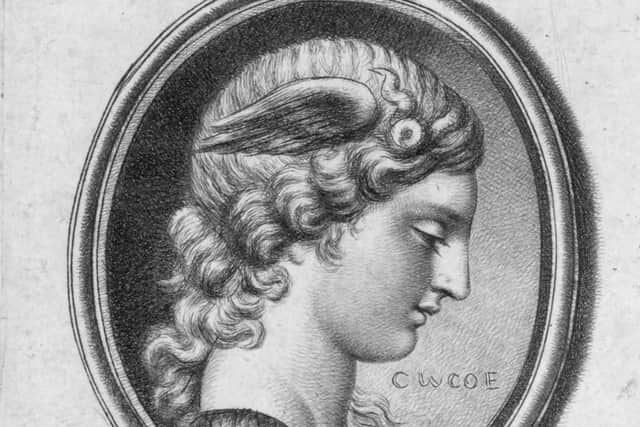Medusa tattoo meaning: story of the Greek mythology, TikTok tattoo trend explained, what is Medusa piercing?
and live on Freeview channel 276
If you’ve spent any time recently on TattooTok, which is the tattoo community on TikTok, you might have seen an increase in people talking about Medusa tattoos and the meaning behind them.
It can be easy to find yourself suddenly out of the loop, especially with the speed that conversations, trends and movements online tend to move at.
This is everything you need to know.
Who is Medusa?
Advertisement
Hide AdAdvertisement
Hide AdMedusa is a figure from Greek mythology who was one of three Gorgon sisters alongside Stheno and Euryale. Medusa was the only mortal, her sisters instead immortal.
While descriptions of Medusa have varied, from beautiful to grotesque, fair to monstrous, she is best known for having living, venomous snakes on her head in place of hair, and the ability to turn those who looked into her eyes into stone.


The story of Medusa that most will be familiar with is that of her beheading by Perseus.
The myth says that Perseus was sent by King Polydectes of Seiphus on an impossible mission - to fetch Medusa’s head. Perseus set out on his quest with help from the gods, receiving a mirrored shield from Athena, sandals with gold wings from Hermes, a sword from Hephaestus and the helmet of invisibility from Hades.
Advertisement
Hide AdAdvertisement
Hide AdPerseus attacked whilst Medusa was sleeping, using the mirrored shield from Athena to avoid her gaze. As Medusa was the only mortal, Perseus succeeded in his quest, beheading her with his sword.


Medusa’s beheading resulted in the birth of her two children: a winged horse named Pegasos, and the giant Chrysaor, who both sprung forth from her neck.
While her immortal sisters Stheno and Eurydale furiously went after Perseus for the murder of Medusa, he was able to escape using his winged sandles and helmet of invisibility.
Was Medusa raped?
In the original Latin text for Metamorphoses, by Roman poet Ovid, which tells Medusa’s story, Ovid used the verb “vitiasse”, which is translated as “violate” or “corrupt”.
Advertisement
Hide AdAdvertisement
Hide AdIn Metamorphoses, Ovid wrote that Medusa was originally a beautiful maiden, however, after she was raped by Neptune in Minerva’s temple, she was punished by Minerva by having her hair transformed into vicious snakes.
In an article for the Atlantic from 2016, English professor Elizabeth Johnson described Medusa as the “original ‘Nasty Woman’”. In her piece, Johnson argued that Medusa’s story represented a rape narrative.


Johnson wrote: “In Ovid’s story, the god Neptune sees Medusa, desires her, and decides that, because he is a god, he is entitled to her body (sound familiar?).
“He rapes her in Minerva’s temple, and Minerva, incensed that her temple has been defiled, punishes the victim rather than the perpetrator (again, sound familiar?).
Advertisement
Hide AdAdvertisement
Hide Ad“Minerva transforms Medusa into a snake-haired monster who now, instead of inspiring men’s desire, literally petrifies them.”
Other interpretations of the text include reframing Minerva as turning Medusa’s hair into snakes as an act of protection against men, not as a punishment.
What does a Medusa tattoo mean?
According to the Met Museum, “the most common interpretation of Medusa suggests she is an apotropaic symbol used to protect and ward off the negative, much like the modern evil eye”.
The museum adds: “She represents a dangerous threat meant to deter other dangerous threats, an image of evil to repel evil.”


Advertisement
Hide AdAdvertisement
Hide AdToday, survivors of sexual assault use tattoos of Medusa to fight back against the narrative that victims should be shamed, blamed or punished for their assault.
Medusa and her story have been reclaimed as a symbol of strength and power, with her image also being used as a mark of protection against evils.
What is a Medusa piercing?
A Medusa piercing refers to the piercing that sits above your top lip in the centre, under your nose - also called the Cupid’s bow.
The proper name for this type of piercing is a philtrum piercing, and is typically pierced with a labret stud rather than something like a ring or hoop.
Advertisement
Hide AdAdvertisement
Hide AdA Medusa piercing can take between eight and 12 weeks to heal, however it varies for each individual.


During the healing process, you’ll want to take care of your piercing by keeping it clean with things like a sterile saline solution or salt water rinses.
The piercing doesn’t have any relation to the tattoo or the meaning behind the Medusa tattoos that a lot of people have adopted.
Comment Guidelines
National World encourages reader discussion on our stories. User feedback, insights and back-and-forth exchanges add a rich layer of context to reporting. Please review our Community Guidelines before commenting.
